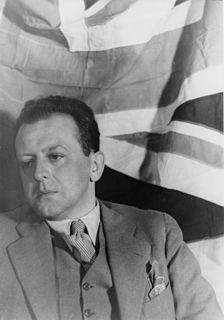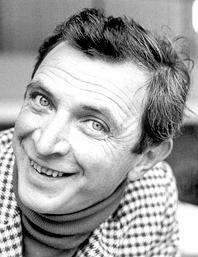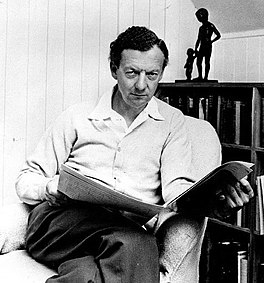Related Research Articles

Gamelan is the traditional ensemble music of the Javanese, Sundanese, and Balinese peoples of Indonesia, made up predominantly of percussive instruments. The most common instruments used are metallophones played by mallets and a set of hand-played drums called kendhang which register the beat. The kemanak and gangsa are commonly used gamelan instruments. Other instruments include xylophones, bamboo flutes, a bowed instrument called a rebab, and even vocalists named sindhen.

Colin Carhart McPhee was a Canadian composer and musicologist. He is best known for being the first Western composer to make an ethnomusicological study of Bali, and for the quality of that work. He also composed music influenced by that of Bali and Java decades before such compositions that were based on world music became widespread.

Evan Ziporyn is an American composer of post-minimalist music with a cross-cultural orientation, drawing equally from classical music, avant-garde, various world music traditions, and jazz. Ziporyn has composed for a wide range of ensembles, including symphony orchestras, wind ensembles, many types of chamber groups, and solo works, sometimes involving electronics. Balinese gamelan, for which he has composed numerous works, has compositions. He is known for his solo performances on clarinet and bass clarinet; additionally, Ziporyn plays gender wayang and other Balinese instruments, saxophones, piano & keyboards, EWI, and Shona mbira.

The angklung is a musical instrument from West Java, Indonesia made of a varying number of bamboo tubes attached to a bamboo frame. The tubes are carved to have a resonant pitch when struck and are tuned to octaves, similar to Western handbells. The base of the frame is held in one hand, while the other hand shakes the instrument, causing a repeating note to sound. Each performer in an angklung ensemble is typically responsible for just one pitch, sounding their individual angklung at the appropriate times to produce complete melodies.

John Cyril Cranko was a South African born ballet dancer and choreographer with the Royal Ballet and the Stuttgart Ballet.

Noye's Fludde is a one-act opera by the British composer Benjamin Britten, intended primarily for amateur performers, particularly children. First performed on 18 June 1958 at that year's Aldeburgh Festival, it is based on the 15th-century Chester "mystery" or "miracle" play which recounts the Old Testament story of Noah's Ark. Britten specified that the opera should be staged in churches or large halls, not in a theatre.

Gamelan gong gede, meaning "gamelan with the large gongs", is a form of the ceremonial gamelan music of Bali, dating from the court society of the fifteenth and sixteenth centuries, associated historically with public ceremonies and special occasions such as temple festivals.
Gordon Crosse is an English composer.
Sir Peter Wright, CBE is a British ballet teacher, choreographer, director and former professional dancer. He worked as a choreographer and as the artistic director of Birmingham Royal Ballet, a classical ballet company based in Birmingham, England. On retiring from the company in 1995, he was bestowed the honorary title of Director Laureate of the company.
Christina Joyance Boughton was the daughter of English composer Rutland Boughton and artist Christina Walshe. She died in 1963 in tragic circumstances..

Richard Marriott is an American composer and performer. He has composed for film, television, dance, theater, opera, installations and video games. He is the founder and artistic director of the Club Foot Orchestra, an important modern ensemble for live music performance with silent films. His teachers include Dominick Argento and Paul Fetler at the University of Minnesota, Pauline Oliveros at UCSD, North Indian sarod master Ali Akbar Khan, shakuhachi master Masayuki Koga, and Balinese composers Nyoman Windha and Made Subandi. Marriott was a member of Snakefinger's History of the Blues and has recorded with The Residents, Brazilian Girls, "Singer at Large" Johnny J. Blair, and many others. He performs on brass and woodwind instruments, Western and Asian.
Maryon Lane was a South African ballet dancer who became well known in Britain as a ballerina of the Sadler's Wells Theatre Ballet and as a soloist with the Royal Ballet.
Leighton Lucas was an English composer and conductor. Born into a musical family, he began his career as a dancer for Sergei Diaghilev's Ballets Russes (1918–21). He became a ballet conductor at 19, as well as a self-taught composer of religious works and film music He also worked as an arranger for Jack Hylton's orchestra between c.1926 and 1930.

Richard Cragun was an American ballet dancer who rose to international fame with the Stuttgart Ballet in Germany. He has been called a "prince of the ballet world" and "one of the most important dancers of the twentieth century."
This is a summary of 1957 in music in the United Kingdom, including the official charts from that year.
This is a summary of 1955 in music of all genres in the United Kingdom.
The Cello Sonata, Op. 65, is a work by the English composer Benjamin Britten. It was premiered in July 1961 at the Aldeburgh Festival in Suffolk. The work is in five movements:
- Dialogo. Allegro
- Scherzo-Pizzicato. Allegretto
- Elegia. Lento
- Marcia. Energico
- Moto perpetuo. Presto
The Prince of the Pagodas is a ballet created by Kenneth MacMillan in 1989 for the Royal Ballet, London, based on the original 1957 John Cranko version. The music is by Benjamin Britten. The scenario was by Colin Thubron, the set and costume designer was Nicholas Georgiadis, and the lighting designer was John B Read.
Brian Shaw was a British ballet dancer and teacher. As a leading dancer with the Royal Ballet during the 1950s and 1960s, he was widely regarded as "one of the finest classical male dancers of his generation".
Benjamin Dwyer is an Irish composer, guitarist and musicologist.
References
- ↑ Reed, Cooke & Mitchell (2008): pp. 258–60
- ↑ Reed, Cooke & Mitchell (2008): p. 123
- ↑ Britten, Benjamin. The Prince of the Pagodas. Published 1957. Boosey & Hawkes.
- ↑ Taruskin, Richard. Music in the Late Twentieth Century. Published 2010. Oxford University Press.
- ↑ Philip Brett, et al. Britten, Benjamin. Grove Music Online. Oxford Music Online. 14 Apr. 2011
- ↑ Cooke, Mervyn. Britten and the Far East. Published 1998. The Boydell Press.
- ↑ Cooke, Mervyn. Britten and the Far East. Published 1998. The Boydell Press.
- ↑ Britten, Benjamin. The Prince of the Pagodas. Published 1957. Boosey & Hawkes.
- ↑ Cooke, Mervyn. Britten and the Far East. Published 1998. The Boydell Press.
- ↑ Cooke, Mervyn. Britten and the Far East. Published 1998. The Boydell Press.
- ↑ Birmingham Royal Ballet, Program January–March 2014
